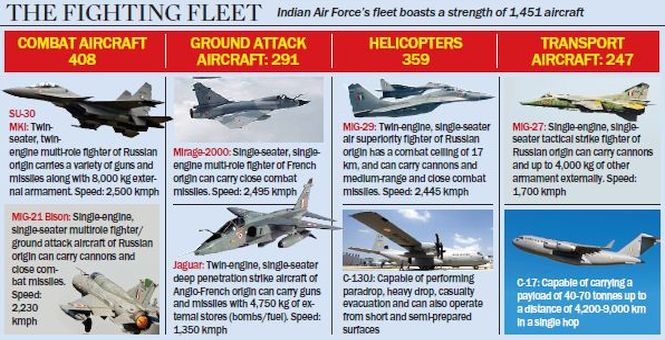
Nations ritualise their victories on the battlefield, lest the coming generations forget. This year, as India celebrates the powerful contributions by its armed forces towards winning the 1965 war with Pakistan, and pays homage to the thousands who died in the 1971 and Kargil wars and on foreign battlefields in the world wars, the Indian Air Force (IAF) has big plans to salute its great sky warriors, both men and machines. But there is irony in history. Between 1221 and 1327, the Mongol empire founded by the great Genghis Khan invaded India and conquered Kashmir and parts of what is Pakistan today. Pakistan has always had a perverted sense of history, probably because it never had one, being part of India until 1947, which also explains hostility towards its gigantic neighbor.
The Tiny GNATS Terrorized the Pakistani Air Force with an Astonishing Strike Rate - No wonder it rightfully earned the moniker "SABRE KILLERS" - PAF Sabres were one of the most Advanced Fighters of that Era
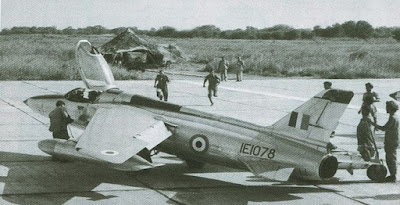 On the winter night of December 3, 1971, Pakistan launched air strikes against IAF bases in a move it named Operation Genghis Khan. Forewarned by intelligence reports, Prime Minister Indira Gandhi had moved all aircraft and other installations into bunkers. But war was very much in the air. On December 14, when the temperature was in the low zeroes, Srinagar Airfield was attacked by a wave of six Sabre aircraft of the Pakistan Air Force (PAF). There was only one fighter pilot on guard. Flying Officer Nirmal Jit Singh Sekhon. Undeterred, the brave Sikh pilot got into his Gnat, India’s own Spitfire, and took to the skies, a lone knight taking on the US-made Sabre, the first swept wing fighter which could perform high-speed dogfights against MiGs.
On the winter night of December 3, 1971, Pakistan launched air strikes against IAF bases in a move it named Operation Genghis Khan. Forewarned by intelligence reports, Prime Minister Indira Gandhi had moved all aircraft and other installations into bunkers. But war was very much in the air. On December 14, when the temperature was in the low zeroes, Srinagar Airfield was attacked by a wave of six Sabre aircraft of the Pakistan Air Force (PAF). There was only one fighter pilot on guard. Flying Officer Nirmal Jit Singh Sekhon. Undeterred, the brave Sikh pilot got into his Gnat, India’s own Spitfire, and took to the skies, a lone knight taking on the US-made Sabre, the first swept wing fighter which could perform high-speed dogfights against MiGs.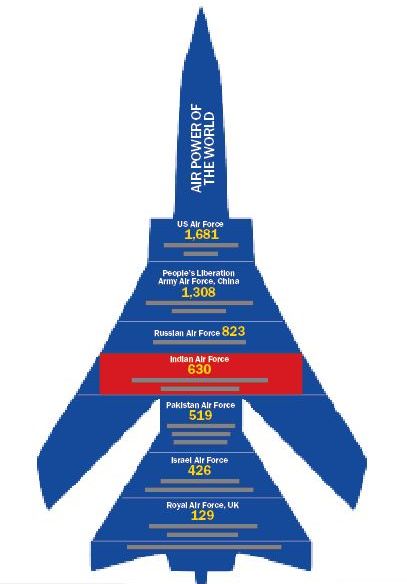 In the unequal fight, Sekhon brought down one Sabre and hit another. The remaining Sabres swooped to the aid of their companions. Sekhon’s Gnat was outnumbered this time by four to one. Official records say in the fight that followed at treetop height, Sekhon held his own, but was eventually overcome by the sheer weight of numbers. His aircraft was shot down by a Sabre pilot and he plunged to his death on the cold terrain of the Kashmir he was defending. Until today, he is the only IAF warrior to be decorated with the Param Vir Chakra, India’s highest award for gallantry.
In the unequal fight, Sekhon brought down one Sabre and hit another. The remaining Sabres swooped to the aid of their companions. Sekhon’s Gnat was outnumbered this time by four to one. Official records say in the fight that followed at treetop height, Sekhon held his own, but was eventually overcome by the sheer weight of numbers. His aircraft was shot down by a Sabre pilot and he plunged to his death on the cold terrain of the Kashmir he was defending. Until today, he is the only IAF warrior to be decorated with the Param Vir Chakra, India’s highest award for gallantry.Now as the BJP-led NDA government celebrates the golden jubilee of India’s sledgehammer victory over Pakistan in 1965, which was so far ignored by previous governments, it’s not just the Army that is in focus. The IAF too, has much to be jubilant about. After announcing the $6 billion 36 Rafale medium multi-role combat aircraft (MMRCA) deal with France in April, the Modi government on Tuesday signed $3 billion deal with US’s defence major Boeing to procure 22 Apache attack helicopters and 15 Chinook heavy lift rotary wing aircraft to give the much-needed combat edge to the IAF.
“Certainly, Rafale is a good fighter jet and one of the six shortlisted aircraft which IAF has done after extensive trials. Rafale will fill the gap of a medium multi-role fighter, as MiG-21s are required to be phased out. As far as Chinook and Apache are concerned, both helicopters are world-class. Americans have been using them over the years, including in their operations in Iraq, Afghanistan and Libya,” says Air Vice Marshal Manmohan Bahadur.
Dassault Rafale Multi-Role Fighter would Significantly Enhance Air Power for IAF
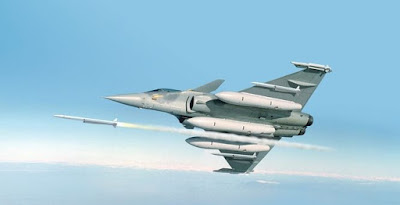 On similar lines, former IAF chief Air Chief Marshal Srinivasapuram Krishnaswamy says about the future of IAF, “I see very positive transformation of IAF. The induction of Su-30, announcement to have Rafale and signing a deal with the US to have Chinook and Apache attack helicopters make IAF a world-class force. But the only worry for the force is the LCA program. We need to have LCAs which can take the place of MiGs. IAF cannot afford to keep flying those over-aged aircraft.”
On similar lines, former IAF chief Air Chief Marshal Srinivasapuram Krishnaswamy says about the future of IAF, “I see very positive transformation of IAF. The induction of Su-30, announcement to have Rafale and signing a deal with the US to have Chinook and Apache attack helicopters make IAF a world-class force. But the only worry for the force is the LCA program. We need to have LCAs which can take the place of MiGs. IAF cannot afford to keep flying those over-aged aircraft.”During World War II, IAF planes bombarded the advancing Japanese army in Burma; its first air strike was on the Japanese military base in Arakan, followed by Japanese airbases at Mae Hong Son, Chiang Mai and Chiang Rai in northern Thailand. IAF’s major role was strike, close air support, aerial reconnaissance, bomber escort and pathfinding missions for Royal Air Force and United States Air Force’s (USAF) heavy bombers. During WW II, IAF expanded its strength with US-built Vultee Vengeances, Douglas DC-3s, British Hawker Hurricanes, Supermarine Spitfires and Westland Lysanders. In 1945, King George renamed IAF as the Royal Indian Air Force. In 1950, when India became a republic, it shed its colonial tag to become IAF again.
IAF is presently the world’s fourth largest air force, established on October 8, 1932, with six RAF trained officers, nine havai sepoy (air soldiers) and four Westland Wapiti aircraft in its inventory. Today, it has more than 1,300 aircraft, including over 600 fighter jets with 1.2 lakh personnel that include 12,000 officers. IAF played a key role in successive wars with Pakistan in 1965, 1971 and the 1999 Kargil conflict. Though in first two wars, IAF was up against the superior PAF, the picayune Gnat with the heart of an eagle proved its mettle in the dog-fight category. From IAF’s first generation subsonic fighters Vampire, Dassault Toofani, Mystere, Hawker Hunter to the Gnat, it dominated the subcontinental skies with the frontline Sukhoi-30MKI, MiG-29, Jaguar, Mirage and the new Rafales.
The Mirage-2000 Fighter Jets & its Heroes Played a Key Role in the Conflict
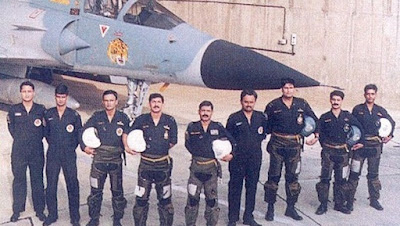 The numbers, being classified, vary. The Military Balance 2010 magazine published by the International Institute for Strategic Studies (IISS) estimated that IAF has 127,000 active men on duty. Flightglobal (Flight International) calculations say IAF has 1,820 aircraft in service, including 595 fighters and 267 attack aircraft. This has taken away Pakistan’s edge of its combat readiness with aircraft that include 380 fighters like Su-30, MiG-29, Mirage and MiG-21 Bison and nearly 260 jets for ground attacks, including MiG-27, Jaguar and MiG-21M. PAF’s fighter jet strength is around 500 aircraft, which include JF-17 Thunder, F-16 Fighting Falcon, Mirage-3, Mirage-5.
The numbers, being classified, vary. The Military Balance 2010 magazine published by the International Institute for Strategic Studies (IISS) estimated that IAF has 127,000 active men on duty. Flightglobal (Flight International) calculations say IAF has 1,820 aircraft in service, including 595 fighters and 267 attack aircraft. This has taken away Pakistan’s edge of its combat readiness with aircraft that include 380 fighters like Su-30, MiG-29, Mirage and MiG-21 Bison and nearly 260 jets for ground attacks, including MiG-27, Jaguar and MiG-21M. PAF’s fighter jet strength is around 500 aircraft, which include JF-17 Thunder, F-16 Fighting Falcon, Mirage-3, Mirage-5.IAF’s figher aircraft, however, didn’t play any significant role in the 1962 Indo-China war. It still has a long way to go to meet the strength of the People’s Liberation Army Air Force of China, which has more than 1,300 fighter jets and aircraft in its inventory that include Su-30MKKs, Su-27s, Shenyang J-16s and Chengdu J-10s.
“Though it is very difficult to compare IAF with Pakistan or Chinese air force, India has developed an adequate deterrent posture required to safeguard the country’s sovereignty. We continuously need to upgrade our air-power ability keeping an eye on neighbours activities,” Bahadur explains.
In air warfare, there are two categories—for combat and ground attack. The first section comprises powerful jets with large fuel tanks and heavy missiles, which can strike deep into enemy territory, like the Sukhois, MIG-29s and Mirages. The single-engine ground attack aircraft provide support to infantry and artillery.
IAF Sukhoi Su-30MKI Air Superiority Fighter
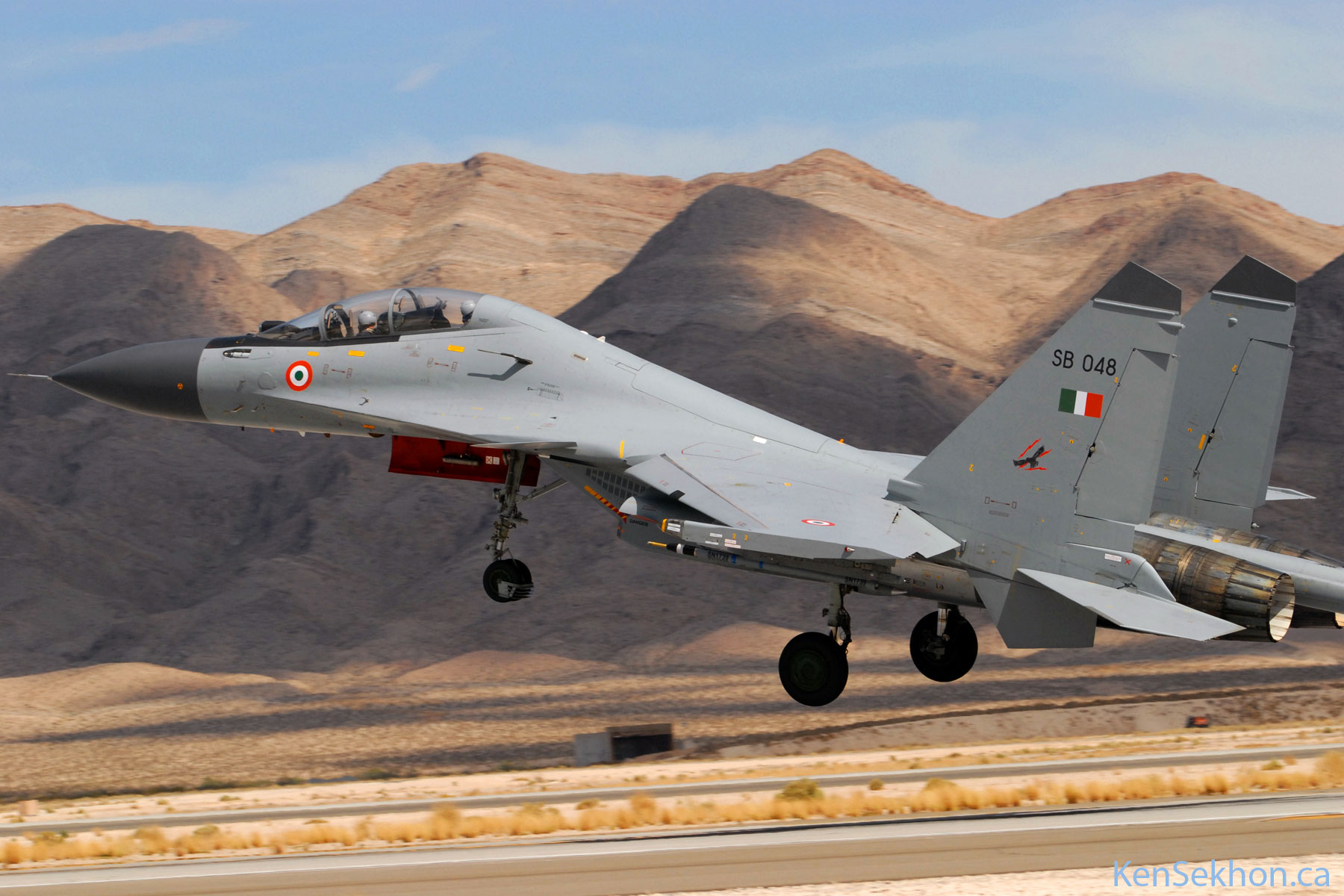 IAF’s sky fighters are legion. The made-in-Russia frontline fighter twin seater jet Su-30 MKI is capable of carrying a variety of medium-range guided air to air missiles with active or semi-active radar or infrared homing close-range missiles. It has a maximum speed of 2,500 kmph. The single-pilot, single-engine French-made Mirage-2000, an air defence and multi-role fighter, can ratchet up its speed to 2,495 kmph. The MiG-29—twin-engine, single-seater air superiority fighter aircraft of Russian origin—is capable of attaining speeds of 2,445 kmph. Then comes the MiG-27, the single-engine, single-seater tactical strike fighter aircraft of Russian origin that can fly at a maximum speed of 1,700 kmph and the MiG-21 Bison, another single-engine, single-seater multirole fighter/ground attack aircraft, which forms the backbone of the IAF. It has a maximum speed of 2,230 kmph.
IAF’s sky fighters are legion. The made-in-Russia frontline fighter twin seater jet Su-30 MKI is capable of carrying a variety of medium-range guided air to air missiles with active or semi-active radar or infrared homing close-range missiles. It has a maximum speed of 2,500 kmph. The single-pilot, single-engine French-made Mirage-2000, an air defence and multi-role fighter, can ratchet up its speed to 2,495 kmph. The MiG-29—twin-engine, single-seater air superiority fighter aircraft of Russian origin—is capable of attaining speeds of 2,445 kmph. Then comes the MiG-27, the single-engine, single-seater tactical strike fighter aircraft of Russian origin that can fly at a maximum speed of 1,700 kmph and the MiG-21 Bison, another single-engine, single-seater multirole fighter/ground attack aircraft, which forms the backbone of the IAF. It has a maximum speed of 2,230 kmph.The Anglo-French-made Jaguar is the last of the country’s combat fleet. It is a twin-engine, single-seater deep penetration strike aircraft with maximum speeds of 1,350 kmph. But fighter jets alone do not win a war. Hence, IAF also has a strong military transport aircraft strength that incudes the mighty C-130J, capable of performing paradrops, heavy drops, casualty evacuation and can operate from short and semi prepared surfaces. It is the heaviest aircraft to land at Daulat Beg Oldie, the world’s highest landing strip in Ladakh, in August 2013. It is complemented by the C-17 Globemaster, capable of carrying a payload of 40-70 tonnes up to a distance of 4,200-9,000 km in a single hop. The bulk of rotorcraft includes over 200 Medium Lift Helicopters (MI-17/MI-17IV/MI-17V5 and Mi-8s), which play a vital logistic support role. The latest induction of the Mi-17 V5 is a quantum jump in India’s medium heli-lift capability in terms of avionics, weapon systems as well as hot and high altitude performance.
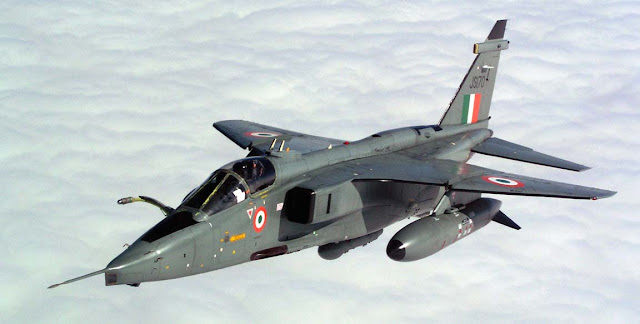
But much of the fleet is ageing. With policy paralysis and a diffident defence minister A K Antony in the previous UPA government, IAF couldn’t add enough to its fighting fleet. In its present squadron strength of 32, the vintage MiG-21 and MiG-27 form 11 squadrons. The 70s design British Jaguar forms six squadrons, followed by the French Mirage 2000, and MiG-29s, made in the vanished Soviet Union, two and three squadrons, respectively. The last three are being upgraded with better missiles and avionics.
IAF’s latest member is the Su-30 MKI, which populates 10 squadrons. The superannuated MiG-21’s poor safety record earned it the unsavory sobriquet ‘flying coffin’. According to an estimate, IAF had inducted a total of 946 MiG-21s in its fleet, and 476 of them have been lost in accidents over the past 45 years.
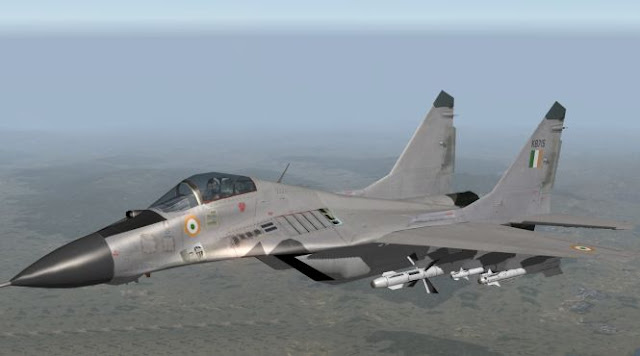
IAF MiG-29 Air Superiority Strike Fighter
IAF faces many challenges to maintain its strike power. Shoddy maintenance, harsh tropical weather and insufficient trainer jets are some of the key reasons behind repeated crashes that kill or injure pilots. Defence ministry figures claim that IAF is losing the equivalent of one fighter squadron (approximately 18 fighters) in accidents every two years. Rookie fighter pilots begin on basic trainer aircraft, move on to intermediate jet trainers (IJTs) before finally graduating to advanced jet trainers (AJTs). These three stages are critical elements of any fighter pilot’s training and shortcuts lead to disaster. But what is happening is that without enough AJTs, beginners were moving straight from the IJTs to frontline warplanes such as the MiG-21.
With the induction of the Swiss Pilatus basic trainer and Hawk AJT from Britain in 2013, the crashes have come down, but not fully stopped. The replacement policy is bothering IAF, since three squadrons of the vintage single-engine MiG-21 and MiG-27 are being phased out, as planned this year. The gap has to be filled fast. The force is trying to raise one squadron at least of Su-30 MKIs this year, but much depends on the manufacturing speed of Hindustan Aeronautics Limited (HAL), which is licensed to produce it in India. HAL, a Ministry of Defence-owned public sector undertaking, was mandated by the Cabinet Committee on Security in March 2006 to produce 16 planes annually and deliver 180 by 2017, in phases. The project is three years behind schedule.
Till 2011, HAL had the capacity to produce just eight Su-30 jets annually, said a Comptroller and Auditor General’s (CAG) report in 2014. Even the parliamentary panel on defence, in its latest report, has warned that IAF’s combat squadrons will total just 25 by 2022, down from the authorised strength of 45. In simple words, IAF will have only 630 fighter jets. If India were to fight on both the Pakistani and Chinese fronts simultaneously, it will need at least 950 attack aircraft mandated by a government sanction.
Defence Research and Development Organisation, the biggest white elephant, produces more disasters than successes. Ambitious programmes to develop Light Combat Aircraft (LCA) Tejas has seen repeated delays. In 1983, in a bid to replace the ageing MiG-21s, the government had launched the LCA program with a deadline of eight to 10 years. `575 crore was allocated. The LCA was officially named ‘Tejas’ by the then Prime Minister Atal Bihari Vajpayee. Repeated postponements and cost overruns escalated the budget to `10,397 crore. In May, the CAG criticised the project for delays and technical shortcomings. However, in 2007, India and Russia had signed the agreement for the joint development of a fifth generation fighter aircraft (FGFA), with the aim to induct futuristic stealth fighters into IAF by 2016-17. But it is also delayed. The fresh deadline is 2020. Similarly, the IJT Kiran-Mk-1 project is also running behind schedule.
In spite of all such drawbacks, IAF pilots and planners are known for innovative thinking. During the Kargil conflict, unconventional attack role performed by IAF was part of the USAF’s teaching manual. For the first time in the history of military aviation, IAF jets carried out missions at 32,000 feet, attacking well entrenched Pakistani positions in the Kargil heights. IAF flew 1,235 missions, striking 24 major target systems and ensuring air dominance over the area of operations through Air Defence Interceptor aircraft like Mirage 2000 and MiG-29s in a coordinated operation with Indian Army. A senior IAF official, who participated in the Kargil Operation, says, “Though Kargil was not a full-scale war, without use of air power, it could not have been won with reduced casualties. It appears that the intruders, who were constantly getting replenishment from Pakistan Army, could not assess the air power and capability of IAF.”
There are other air battles which have gone down in the history of war aviation as examples of endurance, innovation and courage. The famous Battle of Borya is a brief story of one of the most historical dogfights—a thing of the past now with highly sophisticated aircraft. On November 22, 1971, PAF’s F-86 Sabres intruded the eastern sector. Borya was a base of Bangladesh’s Mukti Bahini guerrillas to launch attacks inside what was then East Pakistan.
IAF had to shoot the Sabres down while they were in Indian airspace. The window was small: barely a couple of minutes, and the PAF fighters had to be intercepted over a 3 km wide corridor surrounded on three sides by Pakistani territory. Four Gnats were pressed into action to take on four Sabres. Three Sabres went down in flames in the dogfight. And the tiny Gnats acquired the name ‘Sabre killer’, a veteran fighter tells The Sunday Standard.
In 1965, the first-full scale war against Pakistan since Independence was a lesson in courage and desperation for IAF. The highly-trained PAF was equipped with superior aircraft and weapons systems, courtesy the US. In a nearly three-week-long war, IAF lost 59 of its 460 aircraft, while PAF lost only 43 of its 186. 1965 prompted the need of IAF to dominate the skies. The modernisation drive that started with losses has made it the finest skyfighter in the subcontinent. It is that spirit which will be celebrated on October 8. Nirmal Jit Singh Sekhon’s spirit will be proud.
Source>>